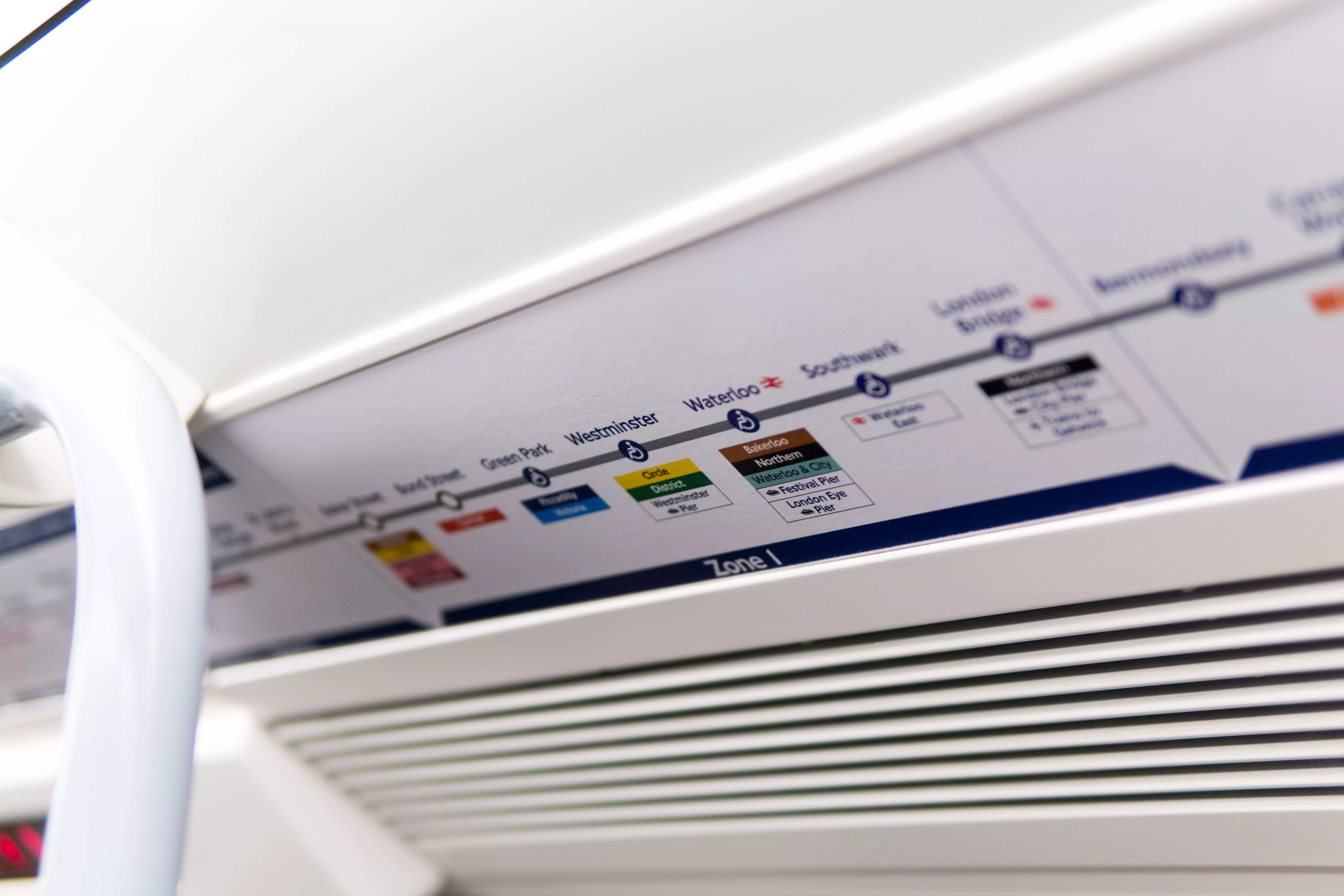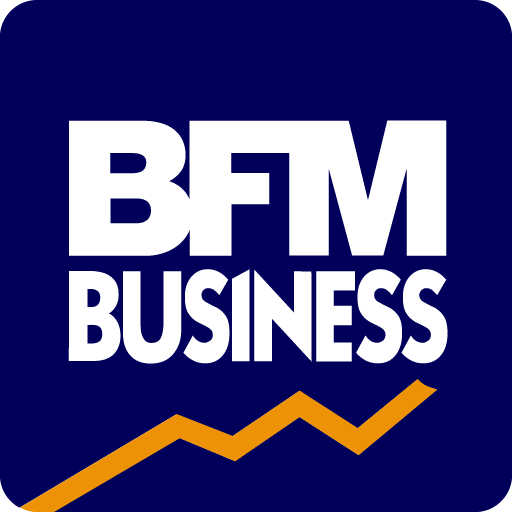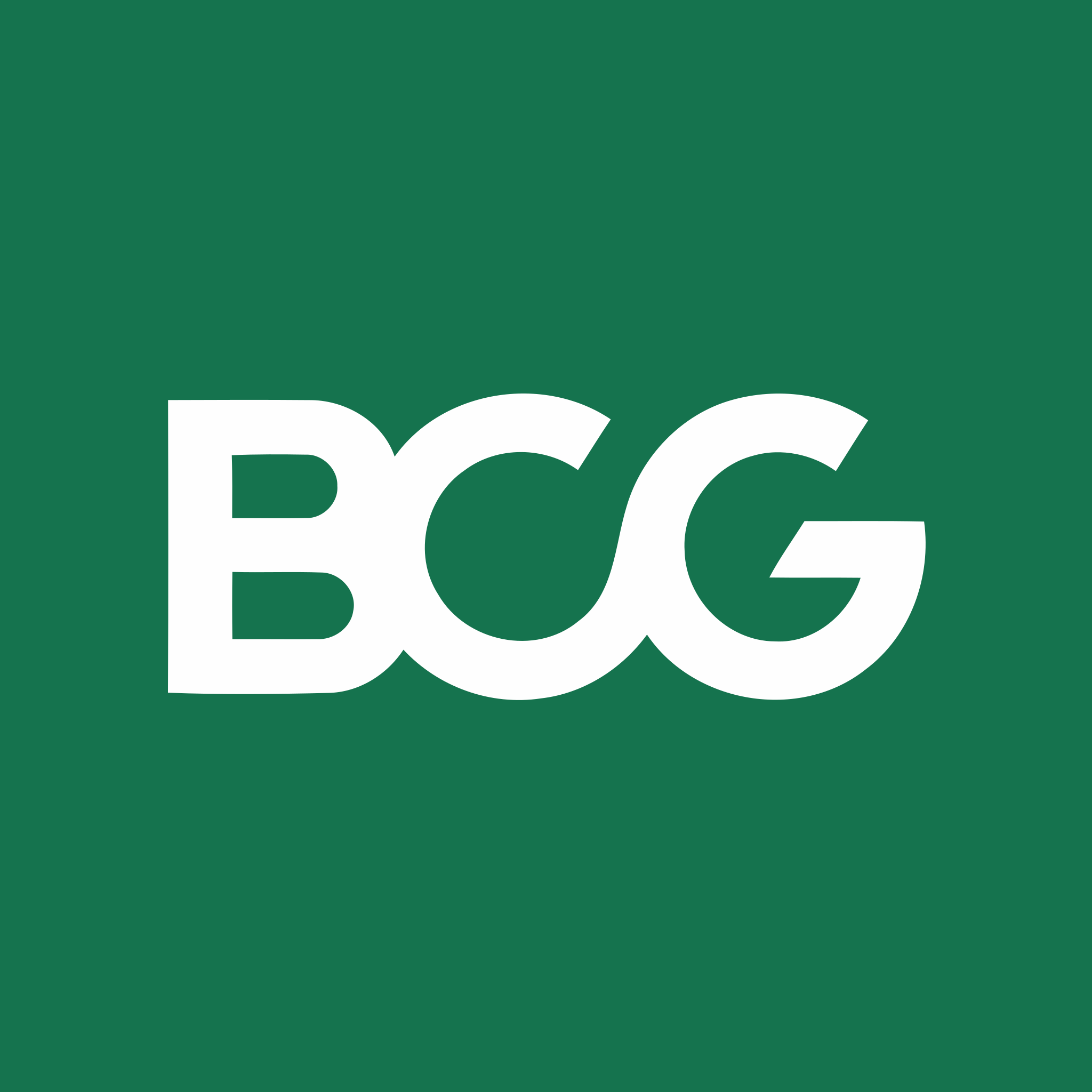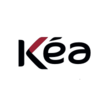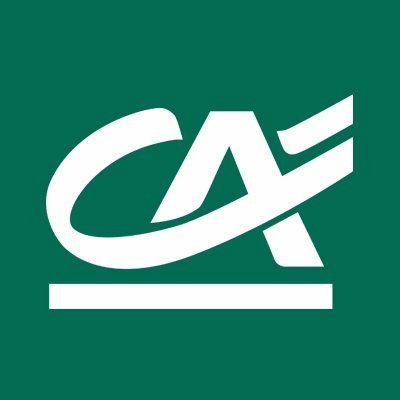Detailed content of our market study
 Inforamtion
Inforamtion
- Number of pages : 35 pages
- Format : Digital and PDF versions
- Last update :
 Summary and extracts
Summary and extracts
1 Market overview
1.1 Presentation and definition of the air conditioner market in France
An air conditioner is a device designed to cool ambient air, and is increasingly reversible, i.e. it can also provide heating. Technologically speaking, they are based on the same operating principles as heat pumps, particularly aerothermal models. As a result, the boundary between the two types of equipment is becoming increasingly blurred, especially as modern air conditioners can be integrated into comprehensive thermal systems, including ventilation, air purification and digital connectivity.
The global air-conditioning market is estimated to be worth $200 billion by 2024, making it a major sector in the thermal equipment industry. The structure of international trade reflects a significant imbalance: China accounts for 41.4% of global air conditioner exports, far ahead of Mexico (13.1%) and the United States (5.8%). On the import side, the United States dominates, with 28.8% of global volumes, followed by Germany, France and Japan. This polarization underlines the strong dependence of Western markets on the major Asian industrial powers.
This is particularly true in France, where the value of domestic air conditioner production has been divided by more than ten in five years, dropping from 2,720 thousand euros in 2018 to 217 thousand in 2023, according to Eurostat. This brutal deindustrialization, coupled with a steady rise in demand, makes the French market highly dependent on imports, particularly from Asia.
On the domestic front, however, the French market is still growing, in both the residential and tertiary segments. The residential segment is mainly driven by wall-mounted, ductable and console-mounted equipment, which respond to the quest for comfort and efficiency in homes. In the commercial sector, VRF (Variable Refrigerant Flow) technologies and Chiller systems are gaining ground in large buildings. Rising summer temperatures, coupled with more frequent heatwaves, are driving this demand, particularly in major cities.
Technological innovation is also playing a key role, with offerings moving towards intelligent, connected products capable of adapting to occupants' needs, controlling themselves remotely, and optimizing energy consumption. hybrid systems, adiabatic modules and solutions incorporating air purification functions are responding togrowing demand for products that are comfortable, energy-efficient and healthier.
French consumers' expectations are changing. Price remains the main purchasing criterion for 58% of those surveyed, butenergy efficiency is becoming a key factor (42%), ahead of noise level (38%) andenvironmental impact (24%). Indoor air quality is becoming a growing health issue: 53% of French people are in favor of using an air purifier, and 56% consider indoor pollution to be harmful to their health. These perceptions are driving the development of air conditioners equipped with filtration functions, or coupled with purifiers.
Finally, the sector is subject to increasingly stringent regulations, both on energy performance(labeling, eco-design) and on the refrigerants used. The tertiary sector decree imposes a 40% reduction in energy consumption in tertiary buildings by 2030, while the f-Gas regulation, effective in 2025, bans the use of fluids with a global warming potential (GWP ) equal to or greater than 750. These standards are driving supply towards alternative fluids such as R32, CO2, propane orammonia, which are more virtuous but also more restrictive in terms of safety.
Key market players are adapting to this dual requirement for performance and compliance. These include manufacturers of heating solutions such as Daikin, Vaillant Group and Mitsubishi Electric, as well as specialist distributors such as Saint-Gobain.distributors such as Saint-Gobain, Rexel and CEDEO, and professional installers such as IDEX and Groupe Hervé. Together, they are shaping a market in the throes of change, driven by the energy, digital and health transitions.
1.2 A dynamic global market
The global air-conditioning market is showing steady and significant growth, rising from ***.** billion USD in **** to ***.** billion USD in ****, at a CAGR of *.**%. This increase reflects growing demand, probably due to urbanization, climate change and rising living standards.
Global air conditioning market World, ****-****, billion USD Source: ****
Air conditioning systems are ubiquitous, although affordability of environmentally optimized products remains a challenge in developing countries. In addition, economic growth in emerging markets continues to accelerate, and demand for air conditioning is set to grow steadily over the coming years. The market should also be boosted by factors such as promising growth in the construction and tourism sectors. Population growth in certain regions of the world is also expected to have a positive impact on residential and commercial construction, and thus increase demand for air-conditioning systems.
Analysis of the geographical breakdown of supply and demand for air conditioners in **** reveals a marked concentration of production in China (***). This disparity underlines a global dependence on Chinese production, despite diversified demand worldwide. Supply distribution is relatively centralized, while demand is more dispersed, which could pose logistical and supply chain challenges. The sum of all Asian countries represents almost two-thirds of global demand, which illustrates their ...
1.3 French markets for air conditioning and heat pump manufacturing and installation are growing
Growth in the air-conditioning equipment manufacturing market
The air-conditioning market is recorded in the INSEE nomenclature under NAF code "**.**Z Marché de la fabrication d'équipements aérauliques et frigorifiques industriels", which covers the manufacture of the following items:
industrial refrigeration equipment air-conditioning machines and appliances fans for non-domestic use heat exchangers air or gas liquefiers air or gas filtering or dedusting equipment attic fans
The market for thermal and air-conditioning equipment is growing rapidly, increasing by **% between **** and ****. This growth can be explained not only by demand for new buildings, but also by the recurrence of extreme heat events, which are prompting households and businesses to purchase air-conditioning equipment. A final driver may also be the growing technological complexity of the equipment installed, which requires more skilled labor and therefore higher costs.
Market for the manufacture of industrial air-conditioning and refrigeration equipment (***) France, ****-****, in billions of euros Source: ****
Growth in the air-conditioning market
The air-conditioning market is recorded in the INSEE nomenclature under NAF code "**.**B Travaux d'installation d'équipements thermiques et de climatisation", which covers the installation of the following components in buildings or other construction projects:
heating systems (***) boilers, cooling towers non-electric solar energy collectors ventilation and ...
1.4 A resolutely negative trade balance
The customs code used here is ****:"Air-conditioning machines and appliances incorporating a motor-driven fan and devices for modifying temperature and humidity, including those in which the degree of humidity is not separately adjustable, and parts thereof".
The French trade balance for air conditioners shows a growing deficit from **** to ****, with imports rising faster than exports. The negative trade balance worsens from -***.* million USD in **** to -****.* million USD in ****, underlining a growing dependence on imports.
French trade balance (***) World, ****, in millions of USD Source: ****
Exports
French air conditioner exports in **** are heavily concentrated in Europe, with Germany in the lead (***). Dependence on European markets is notable, while exports to more diversified markets remain limited, accounting for just **.*% of the total.
Air conditioner export destinations World, ****, in Source: ****
Imports
French imports of air conditioners in **** show significant geographical diversification, with China (***) indicates vulnerability to regional disruptions, while the rest of the world accounts for only **.*% of total imports.
Origin of French air conditioner imports World, ****, as % of total Source: ****
2 Demand analysis
2.1 The building market drives demand for air conditioners
Cumulative number of transactions for existing homes over ** months France, ****-****, in thousands Source: ****
The dynamic real estate sector remains a key factor in demand for air conditioners. However, the market is currently showing signs of a marked slowdown. According to INSEE, the number of transactions for existing homes in France, cumulated over twelve months, fell from *.* million in Q* **** to ***,*** in Q* ****. This gradual fall reflects a marked cooling in real estate activity, which in turn limits the opportunities for fitting cooling solutions when changing owners.
Trend in sales of older homes France, ****-*****, by units sold **** : (***) Source: ****
This trend is confirmed in the long data: between **** and ****, the annual volume of sales of older homes first rose to reach a peak of *.** million units in ****, before falling rapidly to an expected ***,*** sales in **** (***). This trend accentuates the uncertainties surrounding the renewal of the housing stock and the upgrading work often carried out after an acquisition.
Number of housing starts France, ****-****, in thousands of units Source: ****
The number of housing starts is also on a downward trajectory. According to INSEE, single-family home construction has fallen from ***,*** units in **** to ***,*** in ****, while multi-family construction has dropped from ***,*** to ***,*** over the ...
2.2 A mixed picture despite rising demand
Demand for air conditioning is driven by concerns for health and thermal comfort, particularly in the context of global warming. In ****, according to OpinionWay, **% of French people believe that air conditioning is important to protect the health of the elderly, while **% see it as a means ofoptimizing telecommuting conditions, and **% see it as improving indoor air quality. These figures reflect a shift in expectations: air conditioning no longer only meets a need for comfort, but also addresses health and professional issues, in an increasingly hybrid living environment.
Why is air conditioning important? France, ****, in percent Source: ****
However, these expectations are counterbalanced by strong reluctance. Still in ****, **% of non-equipees cite excessive price, **% high energy consumption, and **% negative environmental impact. The cost of acquisition and ecological concerns thus weigh heavily in household choices, even in a context of recurrent heatwaves and health alerts. These factors are holding back mass adoption, despite a largely positive perception of the usefulness of air conditioners.
Why don't you have an air conditioner? France, ****, in percent Source: ****
Finally, the related market for air purifiers shows similar dynamics. In ****, **% of French people consider air purification systems to be too expensive, of which **% consider them "a little too expensive" and ...
2.3 A market buoyed by heat waves in France, but subject to the cyclical nature of climatic hazards
According to Le Parisien, the sale of air conditioners in France is correlated with the explosion of heat waves in France during the summer months: "since the major heatwave of ****, there has been an explosion in demand from private individuals", explained the manager of Clim Denfert. This echoes the catastrophic human toll and the growing awareness of the need for frail people to be protected against the multiplication of heatwaves.
Poll: How intensely do you feel the heat? France, ****, in Source: ****
Seasonality of heatwaves in question
Google Trends also shows that French interest in air conditioners is logically linked to the different seasons. In fact, the number of Google searches for the term "air conditioner" is highly cyclical, increasing sharply during the hottest months of the year, as can be seen in the graph below.
Google Trends results for the term "Air conditioner" France, ****-****, Google index Source: ****
Note: the graph above represents the proportion of searches for a given keyword in a specific region and for a specific period, compared with the time when the rate of use of this keyword was highest (***). Thus, a value of ** means that the keyword was used half as much in the region concerned, ...
2.4 Price and environmental constraints hold back growth in the air-conditioning market
According to PositivR, France has one of the lowest air conditioning equipment rates in the world, with just *% of households equipped in ****. There are several reasons for this trend:
Economic and ecological considerations: Many French people avoid air conditioning to save energy and because of environmental concerns. Air conditioning is expensive to buy (***) and in terms of energy consumption, producing more heat than it removes. Cultural skepticism: A large proportion of the French population, as well as Europeans in general, regard air conditioning as unhealthy. According to a **** survey, **% of French people do not want to install air-conditioning despite increasing heatwaves. Environmental awareness: Environmental concerns are high, with **% of French people refusing air conditioning in order to reduce CO* emissions. In ****, air conditioning accounted for some *,*** million tonnes of CO*, almost as much as South and Central America's emissions in ****.
Environmental awareness therefore appears to be one of the main drivers, but there are others to consider too.
Poll: Why don't you install an air conditioner in your home? France, ****, in Source: ****
In response to heat waves, the majority of French people opt for a simple fan (***).
The OpinionWay survey for France Energie reveals that **% of French people want to reduce ...
2.5 Indoor air quality: a growing challenge for air conditioner users
Indoor air pollution is now perceived as a real nuisance by a significant proportion of the French population. According to the ADEME **** barometer, **% of respondents say they feel the effects "sometimes" and *% "often", while **% say they rarely feel them. However, **% of French people say they have never been bothered. This shared perception underlines the fact that, while indoor pollution is not universally felt, it remains a source of discomfort for a significant proportion of the population.
Perception of discomfort linked to indoor air pollution France, ****, in Source: ****
When it comes to identifying the causes of outdoor air pollution, the French overwhelmingly point to road traffic(***). This ranking shows that the main environmental concerns remain focused on visible, everyday mass emissions, fuelling a heightened sensitivity to the air we breathe.
Perceived sources of outdoor air pollution France, ****, in Source: ****
In terms of health, air pollution is perceived as a serious threat. **% of French people believe that air pollution has a major impact on health, and **% consider its impact to be moderate, compared with just *% who think it has no effect at all. This strong consensus on public health risks justifies the growing interest in solutions to improve indoor air quality, such as ...
2.6 French air-conditioning purchasing habits and expectations
When it comes to hot weather, the French prefer simple solutions to cool off before resorting to air conditioning. According to the June **** Airton - YouGov Barometer, **% of respondents believe that closing windows in the morning is the most effective way of keeping cool, far ahead of wearing light clothing (***) remain in the minority, reflecting a search for sobriety and low-cost solutions.
Best way to cool down France, ****, in Source: ****
When asked about the most economical cooling system, the French have a relatively balanced perception. **% consider air conditioners to be the most economical system, ahead of misters (***). However, **% mentionother systems and **% admit they don't know, reflecting a lack of consensus and uncertainty about the actual running costs of equipment.
Most economical cooling system France, ****, in Source: ****
When choosing an air-conditioning system, cost appears to be the most important criterion for **% of French people, ahead ofenergy efficiency (***) are also taken into account, but in a secondary manner.Aesthetics were a determining factor for only **% of respondents, confirming that air conditioning is perceived above all as a functional rather than an aesthetic purchase.
Main criteria when buying an air-conditioning system France, ****, in Source: ****
In terms of budget, **% of French people say they plan ...
3 Market structure
3.1 Value chain
3.2 A booming market
The heating and air-conditioning installation market has been growing strongly for several years. Between **** and ****, the number of employees in the sector rose from ***,*** to ***,***, an increase of almost **% in thirteen years. At the same time, the number of establishments has risen from **,*** to **,***, reflecting a dynamic trend not only in hiring, but also in business start-ups. After a slight decline between **** and ****, business activity began to pick up again in ****, accelerating steadily until ****.
establishments and workforce in heating and air conditioning installation work France, ****-****, in thousands Source: ****
The geographical breakdown of the workforce in **** shows a marked concentration in certain regions.Île-de-France dominates with *,*** establishments, followed byOccitanie(***), lag behind. This regional imbalance illustrates both the concentration of air-conditioning demand in dense urban areas and the effect of climatic conditions.
In terms of number of employeesÎle-de-Francealso leads the way, with**,*** employeesrepresenting**,* %of the national total. L'Auvergne-Rhône-Alpesfollows with**,*** employees(***). This regional hierarchy reflects the demographic and economic weight of the major metropolises in the market's expansion dynamic.
3.3 Segmentation of the air conditioning and heat pump markets
Growth in the commercial customer segment, thanks to DRV and chiller systems
In ****, the commercial customer market was driven by the DRV segment, with over **,*** units installed and growth of *.*% over the year, according to Uniclima.
Growth in the commercial air-conditioning market France, ****-****, in number of units sold Source: ****
According to Uniclima, "chillers", which are liquid-cooled air conditioners, grew by +*% in ****: the technology that drove this segment at the time was water-cooled condensation, with *.*% growth.
Market trends by technology France, ****-****, in units sold Source: ****
A heat pump market segmented between water-source aerothermal systems, geothermal systems, thermodynamic water heaters and air-source aerothermal systems
Breakdown of heat pump volumes France, ****, in Source: ****
evolution of heat pump segments France, ****-****, in thousands Source: ****
The dominant segment is that of air-to-air heat pumps (***), driven by machines with capacities below **.* kW, which corresponds to the residential and small tertiary markets. It has seen further growth of over **% between **** and ****.
The second most represented segment is air-to-water heat pumps (***). This segment grew by -**.*% in ****, after recording the strongest increase the year before. The number of air-to-water heat pump installations has more than doubled in the space of three years. This is largely due to ...
3.4 Modest French production in a European market dominated by a few countries
The analysis of the European production structure in the air conditioning sector is based on the aggregation of three PRODCOM codes that are particularly representative of the systems used in buildings:
******** for wall-mounted or window-mounted systems (***), ******** for machines with refrigeration units (***), ******** for systems without integrated units (***).These three lines cover most of the configurations found in the residential and commercial sectors.
In France, the industrial dynamic is clearly in decline. National production, which exceeded *.* billion euros in ****, has collapsed to *** million euros in ****, a drop of over **% in five years. This massive decline reflects a structural setback: loss of competitiveness, offshoring, but also an upmarket shift abroad that is not being followed locally. However, France still ranks *th in Europe, proof that the industrial base has not totally disappeared.
French production of air-conditioning machines France, ****-****, in thousands of euros Source: ****
across the EU, global production of air conditioners for buildings reached *.*** billion euros in ****. Seven countries account for the overwhelming majority of this value. Germany leads the way with over *** million euros, followed by Italy (***), Finland, Spain, the Netherlands and France. Together, these seven countries account for **.*% of European production, indicating a very high geographical concentration of supply, to ...
3.5 The development of cooling networks
Although cooling networks have historically been a collective public service as distinct from individual air-conditioning, they now represent a credible, structuring alternative in the urban cooling ecosystem. Their development is in line with a logic of decarbonization, energy sobriety and climate resilience. Although they are still marginal compared with individual solutions, their role is set to grow significantly.
In ****, only *.* TWh of cooling was delivered in France via *** km of networks to around *,*** buildings, compared with almost ** TWh for heating networks. According to ADEME, this volume falls far short of the estimated potential of over ** TWh of cooling requirements in the residential and tertiary sectors by ****. Cooling networks mainly use local sources such as river water, sea water, geothermal aquifers or waste heat from urban waste, making them a solution aligned with ecological transition objectives.
The players in this sector - energy service companies, local authorities, landlords - are organized around a centralized management model based on public service delegation or energy performance contracting. Today, their development is strongly supported by the French government, via the Fonds chaleur, energy savings certificates (***) that still limit market growth.
The market structure is still dominated by a few major operators (***), but is gradually opening ...
4 Offer analysis
4.1 Three distinct heat pump price ranges
Changing expectations in terms of thermal comfort can no longer be dissociated from concerns about indoor air quality. Ventilation, initially perceived as a simple complement to heating or air conditioning, is now becoming a major differentiating factor for HVAC equipment.
Several studies point out that we spend an average of **% of our time in enclosed spaces, where indoor air can be up to * times more polluted than outside. This observation has prompted the industry to propose solutions combining air renewal, filtration and energy efficiency.
To meet these challenges, the range of products on offer has diversified considerably. Several technologies coexist:
Single-flow CMV, found in over **% of homes equipped with mechanical ventilation, provides continuous extraction of stale air. Humidity-controlled models, which automatically adjust flow rates according to indoor humidity, deliver energy savings of up to **% compared with self-regulating versions. Double-flow CMV represents a significant step upmarket. It recovers **% to **% of the heat contained in extracted air, reducing heating requirements while filtering external pollutants, notably fine particles and pollens. Distributed mechanical ventilation (***) is a lightweight solution for renovations. Each damp room is equipped with an independent extractor, enabling air quality to be improved without major structural modifications to the building. Insufflation ventilation (***), still ...
4.2 Slightly decreasing prices, but with variations between ranges
According to Le Parisien, a basic air conditioner costs €*** in ****. This model plugs into the mains and needs to be located near a window to discharge hot air to the outside via a hose.
According to the same source, a silent mobile air conditioner costs between €*** and €*,***. These models are equipped with a condensing system to be placed outside the home. Fixed air conditioners, according to the same source, cost €*,*** per room: for a three-bedroom home with these units in every room, the price would be €**,***.
According to INSEE, consumer prices for air conditioning and heating appliances in France have fallen by more than *% since ****. This drop even reached *% in May ****, before a gradual rise in the price of this type of appliance.
Consumer price index for heating and air-conditioning appliances France, September ****-September ****, base **** Source: ****
Innovations that could change the face of the market in the future
According to Cache Climatisation, connected air conditioners make it possible to control the appliance remotely via a cell phone and wifi. The phone application replaces the traditional remote control and allows the appliance to be controlled by voice too. This allows users to enhance their comfort of use with more powerful programming options. ...
4.3 New supply trends: an industry in search of sobriety and innovation
Under the combined effect of environmental pressure and targets for reducing energy consumption in the commercial sector, manufacturers and installers of air-conditioning systems are profoundly adapting their offering. Far from being incidental, these adjustments are becoming strategic: heating, ventilation and air conditioning (***) account for up to **% of a commercial building's energy expenditure.
Faced with these challenges, technological innovation plays a central role. for example, Carrefour Property is deployingan adiabatic module designed by ETT in several of its shopping malls. This system, which complements an air-to-air heat pump, enables efficient cooling by limiting the use of the compressor: consumption drops from ** kWh to *.* kWh, a saving of almost **%. This system is already being implemented in some twenty centers, and is attracting other major retailers (***).
Mitsubishi Electric, for example, has developed a hybrid variable refrigerant flow solution. Operating with R** fluid, this technology reduces refrigerant connections by **-**%, limiting risks and lightening the overall carbon footprint of the installation. The system also facilitates leak detection and management, enhancing operational reliability for retail operators.
Last but not least, the aesthetics and integration of the systems into the points of sale are also becoming selling points. For example, Mitsubishi offers exposed ducting (***), adding a welcome ...
4.4 Supply-side insights from the air purifier market
Although focused on air purifiers, the following graphs offer valuable insights into customers' expectations of solutions linked to indoor air quality, a related sector to that of air conditioning and air treatment. They enable us to anticipate certain behaviors and decision-making criteria that could also influence the supply of heating and air-conditioning equipment.
The distribution of air purifiers in France relies primarily on specialized channels: specialized online distribution accounts for **% of sales, followed by specifiers(***), remain more marginal. This strong weighting of specialized channels confirms the importance of technical advice and reliability in the purchasing decision, which is also relevant for thermal equipment. Source: ****
Distribution channels for air purifiers France, ****, in Source: ****
When it comes to promoting products, a number of criteria appear to be decisive. Thesystem's efficiency is cited first by **% of professionals, followed by the technology used(***), showing that performance and quality take priority over acquisition cost alone in a technical contract. Source: ****
Criteria used to value air purifier solutions France, ****, in Source: ****
Finally, the obstacles to the purchase of air purifiers illustrate certain risks for related markets. The main reasons for non-buying are theabsence of regulatory obligation(***). Cost, considered too high, is also an obstacle for **% of prospects. ...
5 Regulations
5.1 Indoor air quality regulations
Regulations governing indoor air quality remain incomplete in France today, despite recent developments.
Existing standards To date, there are no binding regulations specifically governing air purification devices. However, two standards provide a framework for product evaluation:
NF B**-***: assesses the performance of self-contained air cleaners against VOCs, micro-organisms, allergens and particles, via laboratory tests on small volumes. NF EN *****-*: applies to devices using photocatalysis to eliminate VOCs and odors.A new standard (***).
Legislative and regulatory framework
LAURE law (***): large cities required to monitor and provide information on outdoor air quality. European Directive (***). IPPC Directive (***): framework for polluting installations, transposed into French law in ****. Grenelle II law (***): mandatory monitoring of air quality in establishments receiving sensitive public. Loi Climat et Résilience (***): obligation to carry out additional work to ensure adequate ventilation during renovations. RE ****: tighter control of ventilation systems in new buildings.
Update for sensitive establishmentsSince January *, ****, nurseries, schools and primary and secondary-level establishments must:
Carry out an annual assessment of ventilation and measure CO₂ levels. Carry out a self-diagnosis of indoor air quality at least every * years.Practical documents (***).
Housing and offices
In older buildings, general ventilation is mandatory, with minimum air flow rates per room. No overall ...
5.2 Increasingly stringent regulations for the air-conditioning sector
In response to energy and environmental challenges, regulations governing heating, ventilation and air conditioning (***) have been considerably tightened in recent years. The tertiary sector decree of July **** imposes a gradual reduction in the final energy consumption of tertiary sector buildings of at least *,*** m²: -**% by ****, -**% by **** and -**% by ****. These ambitious targets apply to a vast number of buildings, since France's tertiary sector covers *** million square meters, **% of which are larger than *,*** m².
In addition to energy consumption, environmental regulations also aim to reduce greenhouse gas emissions. The European climate plan calls for an **% reduction in GHG emissions by ****, compared with **** levels. to this end, the F-Gas regulation, in force from ****, will ban the use of refrigerants with a global warming potentialwarming potential (***) of *** or more, accelerating the transition to more environmentally-friendly fluids that are often more flammable or toxic.
Regulatory constraints are compounded by economic realities: HVAC accounts for between **% and **% of total energy expenditure in a commercial building, and an even higher proportion in the food sector. To meet energy efficiency requirements, players need to declare their baseline consumption on the OPERAT platform, taking into account changes in their activities (***).
Against this backdrop, a number of innovations ...
6 Positioning the players
6.1 Market segmentation
6.2 The analyst's eye
Context:
Today's air-conditioning market is structured around powerful international dynamics. The United States accounts foralmost **% of global imports, while China dominates exports with over **% of volumes. Against this backdrop, French production is collapsing: between **** and ****, the value of air conditioner manufacturing in France fell by over **%, reflecting heavy dependence on imports. These trends show that the industry is being driven by a handful of major global players, even though demand is growing as a result of climate change.
Main trends:
*st trend: Growing awareness of indoor air quality
In ****, **% of French people said they were in favor of using an air purifier to improve indoor air quality.to improve indoor air quality(***). This dynamic reflects a growing awareness of the health issues linked to the air we breathe inside buildings. This favorable context can indirectly benefit the air-conditioning market, as manufacturers integrate purification functions into their systems.
trend *: Discomfort with air quality still underestimated
In ****, only *% of French people said they were often bothered by indoor air pollution. On the other hand, **% say they are "sometimes" affected, while **% (***) perceive virtually no discomfort. This discrepancy between perception and health reality may act as a brake on the adoption of air purification ...
- Ariston Thermo
- BDR Thermea (De Dietrich, Remea, Baxi)
- Daikin (France)
- Systemair
- Lennox International
- Saint-Gobain Quartz
- Rexel
- Comafranc
- Richardson
- Hervé Thermique groupe
- Atlantic Groupe
- Vaillant Group (Saunier Duval)
- Carrier Global
- Airwell (Systemair Groupe)
- Systemair Groupe
- Viessmann (France)
- Airvance
- Mitsubishi Electric France
- Carrier Refrigeration France
- LG Electronics France
- Frisquet
- Idex
- Soler & Palau
- Aaf France
- Absoger
- Actif Industries
- Aerotechnique
- Agencement Climatisation Refrigeration
- Air Depoussiere Sterile Laminaire
- Air Forming
- Air Liquide Advanced Technologies
- Air Liquide Global E&C Solutions France
- Air Refreshing Control (Areco)
- Aircalo
- Akg France
- Albareil
- Aldes Aeraulique
- Aldes Confort Thermique Industrie France
- Alex Verdier
- Alfa Laval Spiral
- Alfa Laval Vicarb
- Applications Rationnelles Electro Mecani (Arem)
- Art & Clim
- Aset
- Atherm
- Atlantic Climatisation Et Traitement D'Air Industrie (Acta Industrie)
- Barriquand Echangeurs
- Baudry Froid
- Beirens
- Boostherm
- Bourbon Froid Ocean Indien
- C F M Cuisine Froid Montagne
- Camfil
- Carly Refrigeration Components Solutions
- Carrier
- Carrier Transicold Industries
- Ces Cuisine Equipement Service
- Cie Industrielle Applications Thermiques (Carrier Culoz)
- Clauger
- Coral Promindus
- Creatis
- D'Hondt Thermal Solutions
- Delestre Industrie
- E Module
- Eid
- Electric Station Climatisation
- Energie Lait Lefranc
- Eoletec
- Epta France
- Etablissements Chimbault Peyridieux
- Etablissements Jean Paumier Et Fils
- Europ Climatisation
- Fct Rhones Alpes
- Fives Cryo
- Froid Cuisine Industrie
- Froids Et Mesures
- Fromfroid
- G Froid Concept
- Genin Froid Energie
- Halton
- Halton Foodservice
- Heliopac
- Hengel Industrie
- Howden Solyvent Ventec
- Hydronic
- Ingersoll Rand Air Solutions Hibon
- Johnson Controls Industries
- Kapp
- Kelvion
- Kelvion Thermal Solutions
- Klim'Top Controls
- Kuthe
- Mahle Behr France Hambach
- Mahle Behr France Rouffach
- Mat'Froid
- Matura
- Mersen France La Mure
- Mota
- Munters France
- Pousstronic France
- Quinoa Residentiel
- Safran Ventilation Systems
- Saftair Ventilation
- Seat Ventilation (Seat)
- Siroco Hvac
- Spirec
- Sté D'Etudes Et D'Installations Frigorifiques (Seif Industrie)
- Sté Kouroucienne De Froid
- Sté Normande D'Air Controle (Snac)
- Sté Normande De Refrigeration Industrielle (Snori)
- Sté Nouvelle Climatisation (Sndc)
- Sté Trane
- Stivent Industrie
- Systemair Ac
- Ta Clim Services Tcs
- Tastvin
- Ther Eco
- Therma France
- Thermatis Technologies
- Toshiba Carrier Europe
- Ziehl Abegg France
All our studies are available online in PDF format
Take a look at an example of our research on another market!
 Choosing this study means :
Choosing this study means :
Access to more than 35 hours of work
Our studies are the result of over 35 hours of research and analysis. Using our studies allows you to devote more time and added value to your projects.
Benefit from 6 years' experience and over 1,500 industry reports already produced
Our expertise enables us to produce comprehensive studies in all sectors, including niche and emerging markets.
Our know-how and methodology enable us to produce reports that offer unique value for money.
Access to several thousand articles and paid-for data
Businesscoot has access to all the paid economic press as well as exclusive databases to carry out its market research (over 30,000 articles and private sources).
To enhance our research, our analysts also use web indicators (semrush, trends, etc.) to identify market trends and company strategies. (Consult our paying sources)
Guaranteed support after your purchase
A team dedicated to after-sales service, to guarantee you a high level of satisfaction. +44 238 097 0676
A digital format designed for our users
Not only do you have access to a PDF, but also to a digital version designed for our customers. This version gives you access to sources, data in Excel format and graphics. The content of the study can therefore be easily retrieved and adapted for your specific needs.
 Our offers :
Our offers :
the air conditioning market | France
- What are the figures on the size and growth of the market?
- What is driving the growth of the market and its evolution?
- What is the positioning of companies in the value chain?
- Data from several dozen databases
Pack 5 études (-25%) France
- 5 études au prix de 74 €HT par étude à choisir parmi nos 1200 titres sur le catalogue
- Conservez -25% sur les études supplémentaires achetées
- Choisissez le remboursement des crédits non consommés au terme des 12 mois (durée du pack)
Consultez notre catalogue d’études sectorielles
